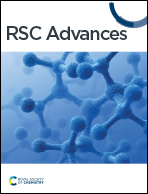Green synthesis of silica and silicon from agricultural residue sugarcane bagasse ash – a mini review
Abstract
Silicon dioxide (SiO2), also known as silica, has received attention in recent years due to wide range of capable applications including biomedical/pharmaceutical, energy, food, and personal care products. This has accelerated research in the extraction of materials from various agricultural wastes; this review investigates the extraction of silica and silicon nanoparticles from sugarcane bagasse ash with potential applications in electronic devices. Specific properties of silica have attracted the interest of researchers, which include surface area, size, biocompatibility, and high functionality. The production of silica from industrial agricultural waste exhibits sustainability and potential reduction in waste production. Bagasse is sustainable and environmentally friendly; though considered waste, it could be a helpful component for sustainable progress and further technological advancement. The chemical, biogenic and green synthesis are discussed in detail for the production of silica. In green synthesis, notable attempts have been made to replace toxic counterparts and decrease energy usage with the same quantity and quality of silica obtained. Methods of reducing silica to silicon are also discussed with the potential application-specific properties in electronic devices, and modern technological applications, such as batteries, supercapacitors, and solar cells.

- This article is part of the themed collection: 2023 Reviews in RSC Advances


 Please wait while we load your content...
Please wait while we load your content...